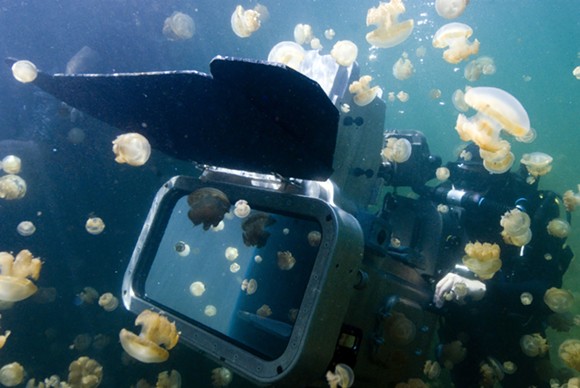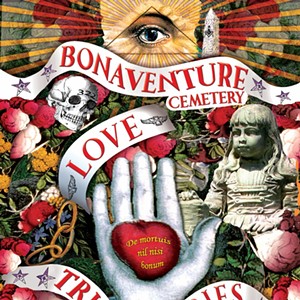AS PART of the Gray’s Reef Film Festival’s expanded commitment to 3D films this year, the critically acclaimed movie The Last Reef: Cities Beneath the Sea 3D screens Friday night.
Co-directors Luke Cresswell and Steve McNicholas aren’t your everyday underwater filming geniuses, however. They also have the distinction of being the co-founders of the global percussion/dance/performance phenomenon known as Stomp.
We spoke to Luke a few days ago.
After your career with Stomp, how did you find yourself making a film about coral reefs?
Well, we had already made a film about the wild ocean sardine run. That one was very much about overfishing off the coast of America, and also off the British coast.
The idea of this second film came from an image where we had a really striking macro shot of coral. We started looking more at how the reefs are actually getting hit left right and center.
So we did some more research, and the more research we did the more we realized it was far more problematic than even we’d thought. It’s so beautiful, but you go find a reef somewhere and you realize it’s getting harder and harder to shoot them because so few remain.
Were you worried about getting into a whole political debate?
Well, this is not a theory, it’s a fact. You can measure the pH level of the sea and you can see it’s becoming more acidic. It’s not necessarily all driven by climate change itself but it’s definitely driven by man.
It’s about the acidification of the ocean, that’s the main problem and that’s what we mainly focused on, which is pretty scary. The more carbon emissions, the worse it gets.
Basically acidification destroys shells, and that’s going to make the reef collapse.
One of the early stories about Bikini Atoll was actually incredibly inspiring. You know it was blown to smithereens by the Americans in nuclear bomb tests. It was so radioactive it had to be left alone for a long time. But only ten years later, when people started to dive there again, they realized the corals had all returned.
If man steps back just for a second, nature has a chance to rebuild. Nature has taken something as extreme as atomic bombs going off underwater and can still come back.
So we sort of start with that basic positive idea and look at where we are now.
How do you get people to care about coral? I suspect many people have no idea it’s a living thing.
It’s difficult to get an emotional connection to coral! It’s not a monkey or panda or sea lion. They are fantastic organisms but they don’t have a cute baby face.
We settled on this idea of statues of people standing underwater. That way no matter how you look at them there is that more humanistic form. It fosters more of a sense of connection.
You can only say the end is nigh so much. You’ve got to envision change and give some sense of hope. And there is time for things to change.
What are some of the technological challenges with this kind of shooting?
This film now four years old. The technology is moving at a huge pace. To do underwater shooting in 3D you need two cameras. It’s a lovely piece of kit but it weighs an absolute ton.
Also, you can’t shoot closer than six feet. We use a mirror so that allows one lens to be upside down. By moving one upside down you can flip that one image in post.
Doing macro at that level you will need a lot of natural light. This film very much shows corals that people know about and generally can access. It doesn’t really get any deeper than 20-30 feet.
In a way it makes perfect sense that a founder of Stomp would get into filmmaking. Your film in particular is very expertly edited, which is a kind of rhythmic process.
In a film like this you’re choreographing to a certain extent. When you have a ballet of dolphins it’s not really that different from choreographing a dance piece or a Stomp piece.
What’s your next project?
I’m actually working on a Stomp inspired feature film now.
Does it feel strange to be a part of something so huge it inspires parodies? That has to be a form of high compliment, right?
Stomp sort of spawned a genre, which is a bit weird. As drummers we were interested in making something we would like. It’s crazy — now we’ll be interviewing someone and reading their resume, and it will say they did Stomp at school.
It’s flattering. A bit bizarre, but flattering all the same.


































